|
|
|
Nature Conservation in BritainSir Dudley Stamp
Collins
The New Naturalist 49
1969
"To promote the conservation of nature and natural resources has been one of the principal aims behind the New Naturalist Library; this volume thus occupies a central position in the series. It was completed shortly before his death by Sir Dudley Stamp, who was both a member of the editorial board from the beginning and a world authority on the use and abuse of land. He first discusses problems peculiar to Britain: a small country with a wide variety of habitats, a large population, an ever-growing demand for land and rapidly changing conditions. He then traces the whole history of the conservancy movement and discusses the problems of managing conservation areas and the conflict between technological progress - in agriculture, forestry, water-mining, industry, housing and land-planning - and the maintenance of wild life and wilderness. This is followed by lists of all National Parks, reserves and areas of outstanding natural beauty in Britain today, private or state managed and an analysis of work in progress, unsolved problems and future aims."
|
Buy from amazon.co.uk 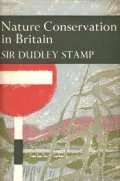
|
|
Grass and GrasslandIan Moore
Collins
The New Naturalist 48
1966
"Dr. Moore, the Principal of Seale Hayne Agricultural College in Devon, is our leading authority on grasses and their utilization. His special interest is the use of natural and seeded grass pastures for the feeding of livestock. Striking advances have been made in recent years in the improvement of such pastures and Dr. Moore deals very fully with this vital link in the feeding of the human race; but he also covers that other equally important role of the grass family in our economy, the cultivation of cereal crops for the production of grain. Grass lawns and playing fields form a centre-piece in most British gardens and public parks and there is a chapter on these, but the horticultural value of grasses as ornamental plants in herbaceous borders and woodland gardens is less well known. These and many other unfamiliar uses for the ubiquitous grass family are described in this succinct and beautifully illustrated work."
|
Buy from amazon.co.uk 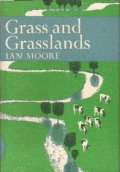
|
|
The Snowdonia National ParkW.M. Condry
Collins
The New Naturalist 47
1966
"William Condry, who for years has explored Snowdonia and studied its natural history, traces the formation and geology of the region, showing how they are related to soil and vegetation, and these in turn to animal life; he describes the mountain country section by section; while for those whose interests are in a pass less than prehistoric, he gives a lively account of some previous travelers to North Wales."
|
Buy from amazon.co.uk 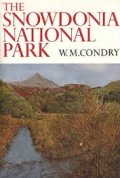
|
|
The BroadsA.E. Ellis
Collins
The New Naturalist 46
1965
"Mr. Ellis, a leading authority on the region, owns and lives on Wheatfen Broad. Over many years he has compiled, with the help of other experts, this general guide to the natural history of the Broads. For the tourist, there is a lively account of the history and nature of the Broads, what they are and what they contain, .For the naturalist there are also detailed lists of Broadland species, both flora and fauna, including a unique long appendix on broadland insects."
|
Buy from amazon.co.uk 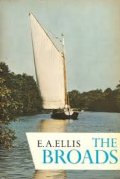
|
|
The Common Lands of England and WalesL. Dudley Stamp & W.G. Hoskins
Collins
The New Naturalist 45
1963
" In this book Dr Hoskins deals with the history of commons, and related legal aspects; Dr Stamp with the nature conservation. The list of commons and village greens are based on hitherto unpublished returns made by local authorities to the Royal Commission - covering the staggering total of one and a half million acres."
|
Buy from amazon.co.uk 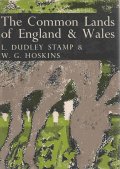
|
|
The Peak DistrictK.C. Edwards
Collins
The New Naturalist 44
1962
"This book is the general introduction to the region for naturalists. It presents a concise account of the Peak District's geological structure and history from ancient upheavals to the effects of erosion today - of its woods and wild flowers, its mosses and fungi, birds and fishes, roads and villages and farms, its weather and its rural economy. All this is obviously too much for one man to cover expertly, and the author, though he probably knows the geography of the Peak as thoroughly as anyone alive, has drawn freely on the help of his friends and colleagues at Nottingham University. These include notably Professor H. H. Swinnerton, the author of the successful volume on Fossils in this series, and Mr. R. H. Hall, who have provided the geological and botanical chapters respectively."
|
Buy from amazon.co.uk 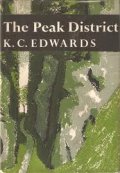
|
|
Weeds and AliensSir Edward Salisbury
Collins
The New Naturalist 43
1961
"This long-awaited book is more than a key volume in the New Naturalist series: it is a work of the first importance by the leading authority on the subject. For though Sir Edward Salisbury is best known to the public for his thirteen years' work as Director of Kew, and for his outstandingly successful gardening books, he has accumulated over years of study a first-hand knowledge of our weed flora that is certainly unique. While it is completely up-to-date, Weeds and Aliens is the result of half a century of observation and curiosity; it is likely to remain for a long time to come a standard work for botanists, farmers, gardeners and naturalists alike."
|
Buy from amazon.co.uk 
|
|
FossilsH.H. Swinnerton
Collins
The New Naturalist 42
1960
"This is not merely a text-book - Professor Swinnerton is already the author of a standard work on palaeontology but in this volume he gives us a straightforward historical account of fossils; they are classified, described, explained and copiously illustrated with photographs and drawings. Starting from the earliest British fauna, he follows the evolution of plants and animals up to the appearance and culture of Homo Sapiens. At the same time, the author pays tribute to the great discoveries of the past, from Leonardo da Vinci to Cuvier and William Smith. Many of these were laymen, whom accidental finds prompted to go fishing in the Palaeozoic and Mesozoic seas which form our land today"
|
Buy from amazon.co.uk 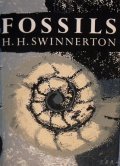
|
|
DragonfliesPhilip. S. Corbet, Cynthia Longfield & N. W. Moore
Collins
The New Naturalist 41
1960
"We are fortunate in having in Britain forty-three species - representatives of eight of the eleven largest and most widespread families of dragonflies and these provide the subject of an intensive study by the three distinguished naturalists who are responsible for the present volume. These naturalists have produced a most useful history and definitive account of the British dragonflies, a book for every kind of student of insects from the amateur collector and insect watcher to the professional."
|
Buy from amazon.co.uk 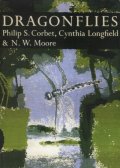
|
|
BumblebeesJohn B. Free & Colin G. Butler
Collins
The New Naturalist 40
1959
|
Buy from amazon.co.uk 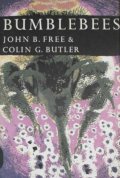
|
|
The Folklore of BirdsEdward A. Armstrong
Collins
The New Naturalist 39
1958
"Mr Amstrong has selected a number of familiar birds - such as the swan, the raven, the owl, the robin and the wren - and has traced magico-religious beliefs concerning them as far back as possible to the cultures in which these beliefs arose. With the scientist's eye and methods of analysis he has examined the development of myth and ritual with originality and ingenuity. Many odd and interesting facts are cited, and explanations are given, for example of the customs of breaking the wish-bone, and of fables concerning weather-prophet birds and the generation of the Barnacle Goose from shell-fish. This book is the first treatment of a group of folklore beliefs as a series of artefacts are treated by an archaeologist, classifying them in order according to epochs. Archaeological data, as well as oral and literary traditions, have been used to illustrate the origins and significance of the current folklore."
|
Buy from amazon.co.uk 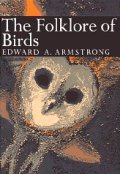
|
|
The World of SpidersW.S. Bristowe
Collins
The New Naturalist 38
1958
"From the first chapter, dealing with spiders in literature and superstition, to the last, on collecting spiders, he blends wisdom with wit. Whilst disclosing the marvels of spider life, he adopts an evolutionary approach which takes him back to early beginnings in the Devonian epoch in his search for explanations of their present structure and habits. Spiders have made a real success of life on dry land, and the influence of their numbers on the evolution of insects is vividly described. We are introduced to each Family in turn, and are shown what they look like, their amazing ingenuity in catching their prey, their unique courtship and many other characteristics. His descriptions are illustrated by 232 drawings both in line and wash by Arthur Smith, and these must rank in beauty and accuracy with any which have been published hitherto."
|
Buy from amazon.co.uk 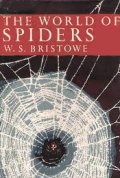
|
|
The Open Sea II: Fish & FisheriesSir Alister Hardy
Collins
The New Naturalist 37
1958
"This is the sequel to the World of Plankton, the first part of Sir Alister Hardy's great survey of life in the Open Sea. It in fact deals with everything in the sea that depends on plankton. In addition to writing of the marine fish of our waters as living creatures taking their part in the general community of the sea, Sir Alister also deals with the fisheries as part of that general natural history. He deals with the animals on the sea bed, so important in supplying food for the bottom living fish, and with fish parasites. Whales and reptiles come within the book's scope, and there is a sketch of the development of fisheries research. The book ends with a discussion of the future development in the fisheries as a result of advances in technology and research."
|
Buy from amazon.co.uk 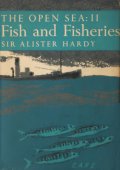
|
|
Insect MigrationC.B. Williams
Collins
The New Naturalist 36
1958
"This is a pioneer book, a real milestone in the progress of biology. Only in recent years have the scientists begun to realise the significance of the widespread distribution of the migratory habit throughout the insect world. Dr. Williams's own personal observations and adventures have played a fundamental part in the wakening of human consciousness to the extent to which insects migrate. His opportunities of studying the problem in remote corners of the world - such as British Guiana, Costa Rica, Egypt, Tanganyika and the Pyrenees - make the book as exciting as a world detective story. For Insect Migration deals with the subject on an international basis, with Britain - the home of the development of the present theories - as the natural peg on which a biological problem belonging to the world can properly be hung."
|
Buy from amazon.co.uk 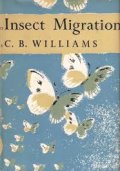
|
|
The World of SoilSir E. John Russell
Collins
The New Naturalist 35
1957
"This book sets out in broad outline, with the minimum of technical terms, the results of revolutionary discoveries by soil scientists, chemists, physicists, biologists and geologists in recent years; it analyses the structure of the soil and shows how it developed, described the circulation of water and gases which give the soil an atmosphere and a succession of climates quite different from those in the air above. It also deals with the prodigious number of living organisms of differing and frequently contrasted characters, ranging from those recently revealed by the electron microscope - which, when they move through the natural channels of the soil, can be likened to a man walking through a tunnel a mile wide."
|
Buy from amazon.co.uk 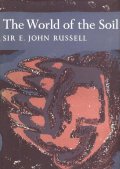
|
|
The Open Sea: The World of PlanktonAlister Hardy
Collins
The New Naturalist 34
1956
"To describe the relatively unknown and mysterious world of plankton is a task that the greatest of marine zoologists might boggle at. Yet the plankton is to the sea what vegetation is to the land. The study of plankton is a complex discipline which few amateur naturalists have had the privilege to enjoy. Never before has such a synthesis of knowledge been attempted in a community of animals so mysterious, yet so important. Professor Hardy has grasped this problem in a new and exciting way; and at least the common reader can discern the pattern of life that dominates two-thirds of the world's surface."
|
Buy from amazon.co.uk 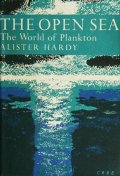
|
|
Mountain FlowersJohn Raven and Max Walters
Collins
The New Naturalist 33
1956
"This is the first book ever published on the wild flowers of British mountains. Mountain Flowers to most people mean "Swiss Alpines". The popularity of the European Alps among British holiday-makers has undoubtedly caused the botanical riches of our own less spectacular mountains to be neglected. Mr. Raven and Dr. Walters have now made up for this neglect in a New Naturalist volume based on their personal experience of flower-hunting in the hills of Scotland, Wales, Ireland and the Lake District - as well as a wide knowledge of the scientific and historical back-ground of our mountain flora."
|
Buy from amazon.co.uk 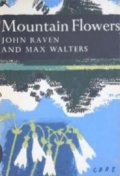
|
|
Trees, Woods and ManH.L. Edlin
Collins
The New Naturalist 32
1956
"Since the war, Mr. Edlin has been engaged in editing technical publications for the Forestry Commission, and, naturally, he deals with recent controversies over the planting policy of the Commission. But Mr. Edlin's book is by no means confined to problems of afforestation and the supply of timber. He deals in detail with all our important trees and shrubs, both native and introduced, against the background of their natural environment; and also has much to say about their uses and about the woodland crafts - many of them dying out - that have been handed down from the past. A particular feature of this book is Mr Edlin's fine account of the past history of British Woodlands, from the close of the Ice Age to the present day. His fascinating description of the changing fortunes of our forests is marked by an attempt to look at woodlands from the special point of view of the men of each succeeding age, as influenced by their 'social' environment and available equipment."
|
Buy from amazon.co.uk 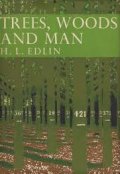
|
|
Man and the LandL. Dudley Stamp
Collins
The New Naturalist 31
1955
"This remarkable book is the second contribution by Dr Dudley Stamp to the New Naturalist series. From it emerges a new and unusual portrait of our islands, and the very clear conclusion that we in Britain are many times fortunate in our land and climate. It has kept its fertility, and its personality, through years of human increase, so that even with its teeming population of today it remains green pleasant and natural. Throughout the New Naturalist series the policy has been to regard man and his works as an integral part of Britain's natural history. The series could not be complete without a direct assessment of man's influence on the face of the land on its animal and plant communities."
|
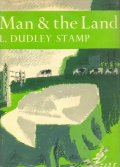 |
|
MothsE.B. Ford
Collins
The New Naturalist 30
1954
|
Buy from amazon.co.uk 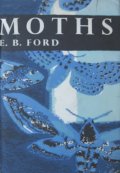
|
|
The World of the HoneybeeColin G. Butler
Collins
The New Naturalist 29
1954
"The complex and wonderful organisation of the honeybee has fascinated many naturalists and writers, but the New Naturalist is fortunate in securing for its library what is undoubtedly one of the finest and most comprehensive treatises on the subject. For many years head of the research station at Rothamsted, Dr Butler's own discoveries (particularly the existence of "queen substance") are truly remarkable. Skilfully woven into the book are the results of the work of others - such as that of von Frisch on the orientation of bees, and the almost incredible way in which information is conveyed about the distance and direction of food sources, by beautiful, extraordinary dances. The copious illustrations are all taken by the author and are marvels of close-up photography."
|
Buy from amazon.co.uk 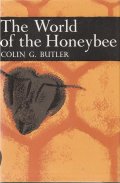
|
|
Sea-BirdsJames Fisher & R.M. Lockley
Collins
New Naturalist 28
1954
"This book introduces the reader to the sea-birds of the North Atlantic, an ocean in which about half the world sea-bird species have been seen at one time or another. Sea-birds are generally more cosmopolitan and widespread than most land birds; and it is no surprise to the ornithologist to find that the communities on the American and European sides of the Atlantic are very similar, most of their member-species being common to both. The authors of this book have spent most of their active lives in research on sea-birds, Lockley specialising in Life-histories, Fisher in distribution and numbers. Each has a long record of exploration of the remotest parts of the Atlantic coast and islands. Their felicitous collaboration brings home for the first time to the general bird-watcher and sea-going naturalist what enormous strides have been recently made in our knowledge of sea-birds. We now know the world population of several soecies, and can follow with accuracy the changes in the numbers of many."
|
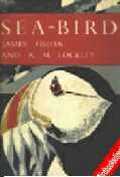 |
|
DartmoorL.A. Harvey & D. St Leger-Gordon
Collins
The New Naturalist 27
1953
"L.A. Harvey, skilled and widely experienced naturalist, Professor in the University College of the South-west at Exeter, has collaborated with the learned D. St Leger-Gordon to make Dartmoor a balanced and consistent book, full of new syntheses and original ideas. The ideal natural history book is that which shows not only wild nature, but man's place in it. By this token, and many others, Dartmoor is such a book."
|
Buy from amazon.co.uk 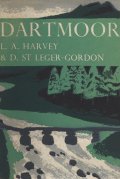
|
|
The WealdS.W. Wooldridge & Frederick Goldring
Collins
The New Naturalist 26
1953
"A country of rolling downs, quiet woods and green fields, the Weald occupies the greater part of the counties of Kent, Surrey, and Sussex, with a fringe of Hampshire. It has a marked community of its own, yet within the rim of chalk downs that forms its natural boundary is a remarkable diversity of sandy heathlands to rich loams, from waterless chalklands to tidal marshes. Professor Wooldrige put the results of a lifetime's research and exploration into this New Naturalists volume. It remains an unrivalled introduction to the understanding and enjoyment of this lovely region and of its natural history in the widest sense."
|
Buy from amazon.co.uk 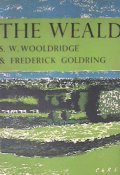
|
|
The Sea CoastJ.A. Steers
Collins
The New Naturalist 25
1953
"Our greatest authority on coastal topography, Professor Steers, has studied the nature of Britain's sea-side and the evolution of coasts and coastline for most of his life. A past Professor of Geography of Cambridge University, he made the now famous comprehensive survey of our entire coastline. His book shows in a persuasive and compelling way the origin and evolution of cliffs, estuaries, sea marshes, sand dunes and the communities of plants and animals that they support."
|
Buy from amazon.co.uk 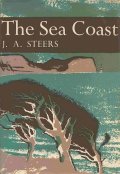
|
|
Flowers of the CoastIan Hepburn
Collins
The New Naturalist 24
1952
|
Buy from amazon.co.uk 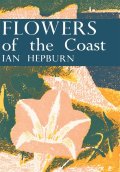
|
|
An Angler's EntomologyJ.R. Harris
Collins
The New Naturalist 23
1952
"In this book, for the first time, really adequate illustrations – both in colour, by T. O. Ruttledge, and in black-and-white – and a really adequate text are provided, by which all stages of all the important angler's flies can be identified, whether the angler fishes in Ireland, Scotland, Wales or England. Furthermore, Mr Harris has rationalised the nomenclature of the flies without breaking with tradition, so that when anglers from Ireland and England meet and discuss the different kinds of nymphs, duns and spinners, they can, with the use of this book, be quite certain precisely what it is they are talking about."
|
Buy from amazon.co.uk 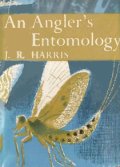
|
|
Climate and the British SceneGordon Manley
Collins
The New Naturalist 22
1952
"In this book Professor Manley shows us the best and worst of our much-maligned climate. He traces the subtle influence of sunshine and cloud, of dew, mist, rain, hail and snow, of heat and cold on the changing scene through the seasons. We often apologise for our climate, but in many ways it is the best in the world. No great extremes of heat of cold, no dreaded droughts, no destructive hurricanes, yet a marked seasonal rhythm with lots of little surprises. The richness of plant and animal life, the extremely high productivity of our farmlands, the fleeting beauties of our landscape – all are closely linked with Britain's climate."
|
Buy from amazon.co.uk 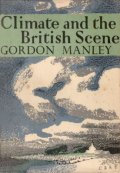
|
|
British MammalsL. Harrison Matthews
Collins
The New Naturalist 21
1952
"The ordinary amateur naturalist is bound to be astonished at the remarkable discoveries about the distribution, life history and habits of our British mammals that Dr. Matthews has collected together in his book. These advances are shown, perhaps, most clearly in the case of the bats. There has been a revolution in our knowledge of the breeding-cycle of these interesting creatures, with its curious problems of delayed fertilisation and delayed implantation; and the discovery of the method by which bats navigate in the dark by means of echo-sounding, here given its most lucid exposition in an English publication, is quite remarkable."
|
Buy from amazon.co.uk 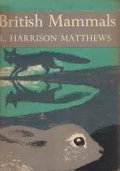
|
|
The British Amphibians and ReptilesM. Smith
Collins
The New Naturalist 20
1951
"This book fills an obvious gap in the literature of British natural history. Very many years have passed since a work of any kind has been published on our amphibians and reptiles, and indeed no other book at all has been written that deals with every known aspect of their structure and behaviour. Dr. Smith has been collecting his material for a third of a lifetime, during which he has become the acknowledged authority on the herpetology, not only of Britain but of Western Europe. His association with the British Museum and his years of expeditions and field observations have made him into as happy combination of ecological naturalist and museum man – and surely he is the best kind of naturalist who knows his way about the fields, woods and streams, as well as he knows his way about the intricacies of description, measurement and bibliography."
|
Buy from amazon.co.uk 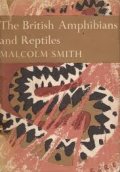
|
|
Wild Orchids of BritainV.S. Summerhayes
Collins
The New Naturalist 19
1951
|
Buy from amazon.co.uk 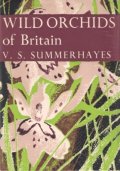
|
|
A Natural History of Man in BritainH.J. Fleure
Collins
The New Naturalist 18
1951
"One of the aims of this series is to present a comprehensive survey of our natural history in relation to its background and environment. A first and vital consideration in a project of over fifty volumes is the study of man himself through the ages, against the very varied natural conditions afforded by the British Isles. A Natural History Of Man In Britain is such a study. In the words of the editors, "we believe that it will contribute much to the outlook of man as one with nature, that alone can save our beautiful islands from wrongful changes, from the degradation and destruction which may result equally from unplanned development as from wrongly conceived planning
|
Buy from amazon.co.uk 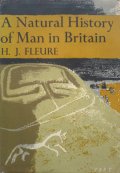
|
|
Birds and MenL.M. Nicholson
Collins
New Naturalist 17
1951
"This, the first book on birds in the New Naturalist main series, is undoubtedly one of the most important contributions to the literature of British ornithology of recent years. Its subject is the impact of civilisation upon our bird life, with particular reference to the species that have come to rely largely on types of habitat greatly modified or actually formed by human action. Mr. Nicholson is already well known to many for his popularisation of the scientific study of birds as a means of their protection, and it is not surprising, therefore, that this volume should also be concerned with the ways in which birds and men can live happily together. Readers will be delighted by his combination of the aesthetic approach with serious criticism, and particularly by the note of optimism in the book – the suggestion that not all the works of man are fated to destroy nature, and that some of them are likely to improve the quality and variety of our birds. From the ornithological point of view, we have an interesting half-century before us. It is extremely probable that at the end of it Birds And Men will still be widely read, and quarried for facts and conclusions by the next generation of naturalists."
|
Buy from amazon.co.uk 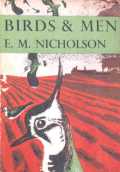
|
|
Wild Flowers of Chalk and LimestoneJ.E. Lousley
Collins
The New Naturalist 16
1950
"Few areas can boast so many rare and beautiful wild flowers as those of the chalk and limestone. Few areas, too, have so much lovely scenery in which to search them out. Mr. Lousley's vivid and authoritative presentation of his subject shows that he has made full use of these opportunities. His special affection is for the woods and chalk downs of south-eastern England, of which he has a knowledge almost unsurpassed. Nevertheless, in this book he has also given us an admirable survey of all the important limestone regions in the country from the Devonian formation at Berry Head to the oolite of the Cotswolds and the great carboniferous stretches of the north."
|
Buy from amazon.co.uk 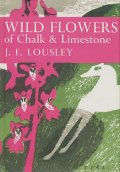
|
|
Life in Lakes and RiversT.T. Macan & E.B. Worthington
Collins
The New Naturalist 15
1950
"The study of life in British lakes and rivers is one of that has been unduly neglected in natural history publications. Dr. Macan and Dr. Worthington are particularly well equipped to provide the readers of the New Naturalist series with a work that is both authoritative and of outstanding interest, since for many years they have been connected with the freshwater biological station of Wray Castle at Windermere in the English Lakes."
|
Buy from amazon.co.uk 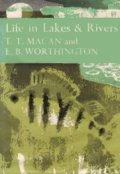
|
|
The Art of Botanical IllustrationWilfrid Blunt
Collins
The New Naturalist 14
1950
|
Buy from amazon.co.uk 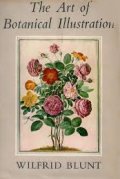
|
|
Snowdonia: The National Park of North WalesF.J. North, B. Campbell & R. Scott
Collins
The New Naturalist 13
1949
|
Buy from amazon.co.uk 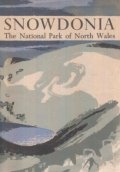
|
|
The Sea ShoreC.M. Yonge
Collins
The New Naturalist 12
1949
|
Buy from amazon.co.uk 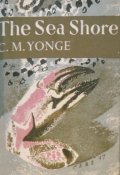
|
|
Mountains and MoorlandsW.H. Pearsall
Collins
The New Naturalist 11
1950
|
Buy from amazon.co.uk 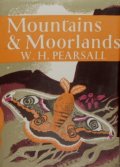
|
|
British Plant LifeW.B. Turrill
Collins
The New Naturalist 10
1948
|
Buy from amazon.co.uk 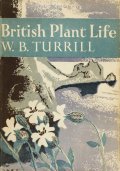
|
|
A Country ParishA.W. Boyd
Collins
The New Naturalist 9
1949
"The natural history of an ordinary English country parish was one of the first subjects that suggested themselves when the New Naturalist series was planned. Being chiefly farmland and therefore practically all man-made, most country parishes are extremely complex from the naturalist's point of view and also inevitably contain a vast amount of human history. Any attempt to describe their plants and animals has to be closely related with the ways of man himself, who must be regarded as the chief element in the community – a fact which has been obvious enough to naturalists ever since the days of Gilbert White. For this book we are fortunate to have found an author who combines a thorough all-round knowledge of natural history with a sound insight into human customs, history, pastimes and farming methods."
|
Buy from amazon.co.uk 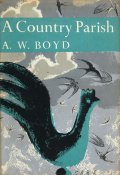
|
|
Insect Natural HistoryA.D. Imms
Collins
The New Naturalist 8
1947
"This volume deals with the natural history of British insects, and introduces the reader to some of the latest discoveries and ideas about them. The author has brought together within convenient compass a large amount of scientific knowledge, often of absorbing interest; and he describes many of the remarkable features associated with the lives of insects."
|
Buy from amazon.co.uk 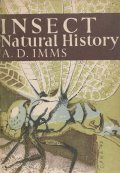
|
|
Mushrooms and ToadstoolsJohn Ramsbottom
Collins
The New Naturalist 7
1953?
"Set out in a style reminiscent of Robert Burton, this volume can truly be described as a 20th century "Anatomy of Toadstool." Indeed, in fairy rings, science and superstition have gone hand in hand to produce a lively story of alternating surmise and research - and even today a full and final explanation of these mysterious rings has not yet been made."
|
Buy from amazon.co.uk 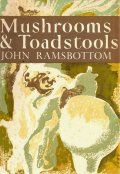
|
|
Natural History Of The Highlands and IslandsF. Fraser Darling & J. Morton Boyd
Collins
The New Naturalist 6b
1947?
|
Buy from amazon.co.uk 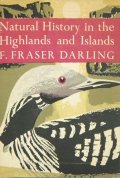
|
|
Wild FlowersJohn Gilmour & Max Walters
Collins
The New Naturalist 5
1947
|
Buy from amazon.co.uk 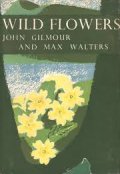
|
|
Britain's Structure and SceneryL. Dudley Stamp
Collins
The New Naturalist 4
1947?
|
Buy from amazon.co.uk 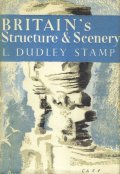
|
|
London's Natural HistoryR.S.R. Fitter
Collins
The New Naturalist 3
1945
"Richard Fitter provided the first comprehensive history of a great human community in terms of the animals and plants it has displaced, changed, moved and removed, introduced, conserved, lost or forgotten. In selecting London as an area for such study Mr.Fitter, himself a Londoner, took the world's largest aggregation of human beings living in a single community and in many ways the most interesting perhaps of all regions of the British Isles, and showed how the spread of man's activities affected the plants and animals in them, destroying some, creating others."
|
Buy facsimile reprint from amazon.co.uk 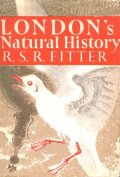
|
|
British GameBrian Vesey-Fitzgerald
Collins
The New Naturalist 2
1946
|
Buy from amazon.co.uk 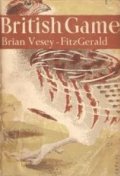
|
|
ButterfliesE.B. Ford
Collins
The New Naturalist 1
1945
"Dr Ford, the author of this fascinating volume on butterflies, was an enthusiastic butterfly collector in his youth. He was not only a professional biologist of great distinction but also brought his wide knowledge of genetics and evolution to bear on the problems arising out of his collecting. Thus he was able to see butterflies both as an absorbing hobby and as part of the great panorama of biology. The resultant book is an outstanding contribution to Natural History in the best sense of the term. Natural History is not something inferior to science – it is part of science, inviting an approach by way of field study. While, therefore, Dr Ford's book contains a somewhat higher proportion of scientific history and technical ideas than most books on Natural History, this for the great majority of amateurs will be a stimulus rather than an obstacle, and throughout the author has kept in mind the needs of butterfly collectors and of all those who love the country in the hope that it may increase their pleasure by widening the scope of their interests."
|
Buy from amazon.co.uk 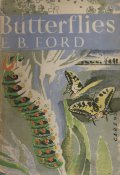
|
|